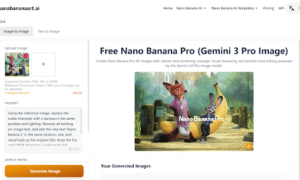There’s a strange kind of silence that falls between trades. You’ve placed your order, the chart’s moving, and suddenly, despite all your research, you feel like you’re guessing. It’s that moment between analysis and action when you start to wonder: Am I really reading the market, or just reacting to it?
This thought isn’t rare. In fact, it’s something most traders, beginners and experienced alike bump into sooner or later. Because no matter how many charts you stare at, or how confident you feel after a green week, the truth is: markets shift fast. And without the right tools, it’s painfully easy to be a step too late.
Not All Tools Are Created Equal
Let’s be honest: some tools waste your time. They look sleek, throw around fancy terms, but don’t really tell you anything useful. Others, the good ones simplify chaos. They don’t predict the future, but they give you something close: a better sense of what might happen next.
But what actually makes a tool useful? It’s not about how colorful the interface is, or how many features are packed in. It’s about how it helps you make a decision when it matters most.
For many traders, that means narrowing focus to what really drives moves: price action, volume, trend patterns, and clear signals.
Why Trading Signals Still Matter
You might ask: “AreTrading Signals still relevant today?” Fair question. With all the access we have now live charts, economic calendars, technical indicators why rely on signals at all?
Here’s the thing: signals don’t replace your brain, they support it. They act like nudges, helping you spot something you might have missed, or confirm what you were already suspecting. And on days when everything feels fuzzy, having a solid signal can help cut through the noise.
That said, not all trading signals are reliable. Some are just echoes of yesterday’s news. Others are delayed, vague, or worse intentionally misleading. That’s why it matters where you get them from. Trust builds over time, and that includes trust in the signals you follow.
How Tools Can Trick You (If You Let Them)
It’s easy to fall into the trap of over-optimizing. You add one more indicator, then another, then a dashboard to track them all. Before long, your screen is a maze. Instead of clarity, you get contradiction. One tool says buy, another says wait, a third flashes red for no clear reason.
Here’s a thought: maybe fewer tools but better chosen ones
can actually make you a sharper trader.
It’s a bit like cooking. Having every spice in the kitchen doesn’t make the meal taste better. It’s knowing when to use what and how much that makes the difference.
Choosing the Best Trading Platform Isn’t Just About Features
If you’ve ever typed Best Trading Platform into Google, you probably got more answers than you needed. Every platform claims to be the fastest, most secure, easiest to use.
But beyond all the features, the real question is: does it feel right?
Can you find what you need quickly? Is it intuitive? Does it give you confidence when markets get messy?
Some traders stick to what’s familiar. Others switch platforms every few months, chasing lower fees or faster execution. There’s no perfect answer. But one thing’s clear: your platform shapes your experience. And if it distracts more than it supports, maybe it’s time to rethink it.
Information Is Cheap. Context Isn’t.
There’s no shortage of market updates these days. Everyone’s publishing price alerts, news flashes, and hot takes. But what most tools still fail to offer is real context and reliable direction.
That’s where some traders find real value in more focused, expert-driven services. For example, platforms like Economies.com provide a structured VIP experience that includes accurate daily forecasts, real-time market insights, and comprehensive analysis across commodities, Forex, crypto, and indices. More importantly, they back these insights with free signals powered by BestTradingSignal, helping traders align their decisions with expert strategies. It’s not about outsourcing your judgment, it’s about upgrading the quality of your inputs before making a move.
Gut Feeling vs Data: Is It Always One or the Other?
Some will tell you to “trust your gut.” Others swear by charts and numbers. The truth? You probably need both.
Because data might show a breakout is coming, but your gut tells you the volume’s weak. Or maybe the signal says “buy,” but the news you just read makes you hesitate. That tension between instinct and info is where real trading happens.
You’re not a robot. So it’s okay to feel uncertain. What matters is how you balance that uncertainty with preparation.
Final Thought: Tools Don’t Make You a Trader They Help You Trade
In the end, the tools you use won’t save you from bad habits, or hand you consistent wins on a plate. What they can do, though, is improve your odds. Clarify your thinking. Help you respond not just react to the market.
So next time you feel stuck between charts, or overwhelmed by inputs, pause for a second. Ask yourself: “Is this tool helping me see more clearly? Or just making me feel like I’m in control?”
That little moment of reflection might matter more than any signal ever will.



































